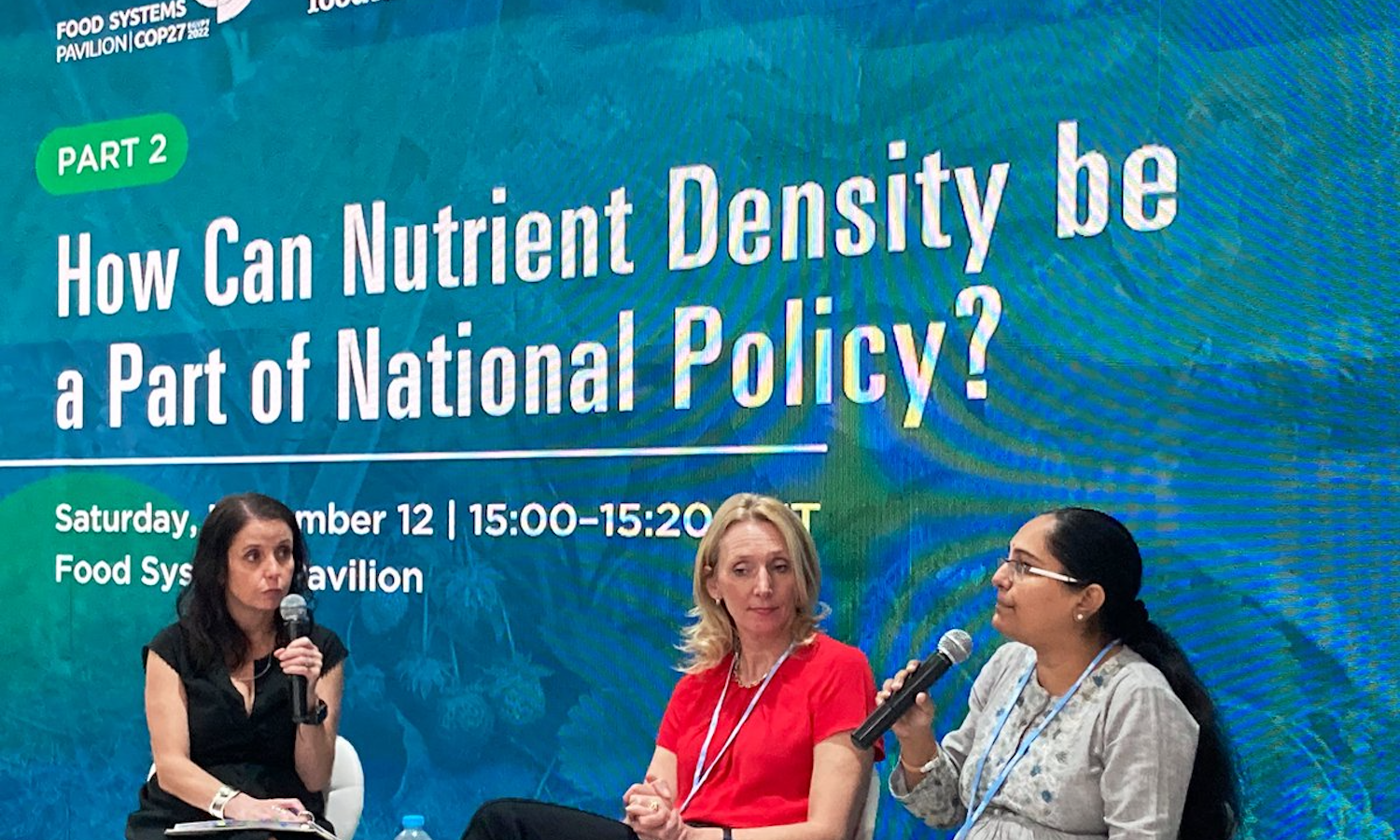During a recent session at the U.N. Climate Change Conference, nutrition experts and advocates highlighted interventions to help ensure access to healthy food. The conversation was organized by Food Tank in partnership with the Food Systems Pavilion at COP27.
“Food is a human right,” says Monica Yator, Founder and Executive Director of the Indigenous Women and Girls Initiative in Kenya. “It is also a basic need.”
In many households, women are responsible for nourishing their families, says Mansi Shah, Research, Documentation and Design Consultant for the Self Employed Women’s Association (SEWA). “Women form an integral part of the entire food system, from production to household consumption and disposal of food.”
But Shah says women lack “voice and visibility in the food system” and “it’s always the women and the girls who face food and nutrition insecurity.” According to the World Health Organization, women are at an increased risk for malnutrition.
This is why Yator and Shah believe it is critical to address gender equity to improve access to nutritious foods.
Yator’s organization introduces pastoralist women to crop farming, which many are able to engage in despite barriers to land tenure. “We have seen a lot of anger, poverty, and malnutrition,” Yator says. “Farming has increased our resilience, increased our food security, fought malnutrition, and also made women proud of themselves.”
And SEWA, a network of 2.2 million, supports self-employed women members in the informal economy. Shah explains that as industrialized practices stripped foods of nutrients and farmers shifted to the production of cash crops, the nutrition of available foods began to decline. Now, SEWA is working to empower women and support their livelihoods by encouraging them to grow and re-incorporate nutrient-rich, traditional foods.
Awareness of aquatic foods and their benefits are also key, says Michelle Tigchelaar a Research Scientist at the Center for Ocean Solutions at Stanford University. “Blue foods tend to be highly nutritious but their nutrients don’t always reach the people who need them most,” Tigchelaar says.
In response, Stanford University’s Center for Ocean Solutions and Center on Food Security, in partnership with the Stockholm Resilience Center and EAT, are working to better understand the role of aquatic animals, plants and algae in supporting healthy, resilient communities and ecosystems.
Speakers also pointed to the role of the private sector, which has the potential to develop nutritious options that are affordable and accessible, while still bringing joy to the foods eaters select.
Planetary, for example, is developing fermentation-based, animal protein alternatives in an effort to address the carbon footprint of the livestock industry. They are also focusing on building the infrastructure needed to scale the production and make their products available.
“It’s our job as innovators…to create a larger choice of foods that are delicious, nutritious, and affordable,” says David Brandes, Co-Founder and CEO of Planetary, “and to give the choice to the population to shift their diets and take the more sustainable route.”
And Unilever, which developed its own internal nutrition standards, is also now reporting on the nutrition quality of their full portfolio, compared to six of the largest nutrition labels available in global markets.
But Hanneke Faber, Unilever’s President of Nutrition, explains that each product performs differently depending on the label it’s compared against. “We think there’s room for harmonization [amongst governments] of what’s healthy, and I think discussions like this can really help with that.”
Watch the full conversation below:
Articles like the one you just read are made possible through the generosity of Food Tank members. Can we please count on you to be part of our growing movement? Become a member today by clicking here.







